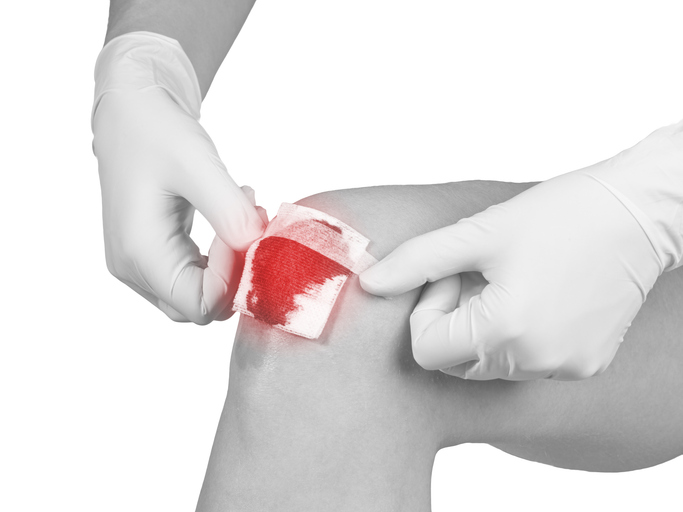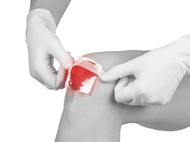Understanding the Stages of Wound Healing
Posted by Jeanne Lowry on Mar 22nd 2024

When it comes to wound care, understanding the stages of wound healing is crucial for effective treatment and recovery. Each stage plays a vital role in the healing process, and proper care is essential to promote optimal healing.
In this article, we will explore the four stages of wound healing: Hemostasis, Inflammation, Proliferation, and Remodeling. We will also discuss the importance of proper wound care techniques to support the healing process.
The Importance of Proper Wound Care
Proper wound care is necessary for effective healing. When a wound occurs, it disrupts the body's natural defense mechanisms, leaving it vulnerable to various complications. By following the right wound care practices, you can promote faster healing and reduce the risk of infection, scarring, and other issues.
Cleanliness and hygiene play a significant role in the wound healing process. Keeping the wound clean helps prevent the buildup of dirt, bacteria, and other harmful microorganisms that can hinder the healing process. It is important to wash your hands thoroughly before touching the wound and use sterile dressings to cover it. Regularly changing the dressings and cleaning the wound with mild soap and water can help maintain a clean and sterile environment, allowing the wound to heal properly.
Preventing infection during the healing process is closely tied to optimal wound healing. Infection can delay healing and lead to more serious complications. To minimize the risk of infection, it is important to avoid touching the wound unnecessarily and keep it protected from contaminants. Applying an appropriate antimicrobial ointment or using specialized wound care products can further reduce the risk of infection and promote a healthy healing environment.
Stage 1: Hemostasis
During the initial stage of wound healing, known as hemostasis, the body's natural response is to stop bleeding and form a clot. Understanding this process helps promote effective wound care techniques.
When a wound occurs, blood vessels at the site of injury constrict to minimize blood loss. Platelets in the blood then aggregate and adhere to the damaged area, forming a temporary plug. This plug helps to slow down bleeding and initiates the clotting process.
If the bleeding is severe and doesn't stop, applying direct pressure to the wound is essential. Use a clean cloth or sterile dressing and firmly press down on the wound. Maintain the pressure for at least 10 to 15 minutes, allowing the blood to clot. Elevating the injured area above heart level can also help reduce bleeding.
In cases where bleeding continues despite applying pressure, it is important to seek immediate medical attention. Excessive bleeding may indicate a more serious injury or underlying condition that requires prompt intervention.
Stage 2: Inflammation
During the second stage of wound healing, known as inflammation, the body's natural defense mechanisms kick into gear to protect the wound and initiate the healing process. This stage typically begins a few hours after the injury and can last for several days.
Exploring the body's natural inflammatory response is crucial to understanding how wounds heal. When a wound occurs, blood vessels in the area constrict to limit bleeding. Afterward, platelets rush to the site to form a clot, preventing further blood loss. As the clot forms, inflammatory cells, such as neutrophils and macrophages, are recruited to the wound. These cells play a vital role in fighting off infection and removing debris from the site, preparing it for the next stage of healing.
Recognizing signs of inflammation is important for proper wound care. Common signs include redness, swelling, heat, and pain. These symptoms indicate that the body's immune response is actively working to repair the wound. However, it's essential to monitor these signs closely, as excessive inflammation can impede the healing process.
Managing pain and swelling during this stage is a key factor for patient comfort and to facilitate healing. Applying cold compresses or ice packs to the affected area can help reduce swelling and alleviate pain. Non-steroidal anti-inflammatory drugs (NSAIDs) may also be recommended by healthcare professionals to manage pain and inflammation.
Stage 3: Proliferation
During the third stage of wound healing, known as proliferation, the body initiates the process of rebuilding damaged tissue. This stage promotes healthy cell growth and tissue regeneration.
One of the key players in this stage is collagen, a protein that provides structural support to the skin. Collagen production increases in response to the injury, forming a temporary scaffold that helps to hold the wound edges together. As the wound heals, the body continues to produce collagen, which gradually strengthens the new tissue.
Healthy cell growth is another essential aspect of the proliferation stage. The body generates new blood vessels, a process called angiogenesis, to supply oxygen and nutrients to the healing wound. This increased blood flow promotes the delivery of immune cells and growth factors, further aiding in tissue repair.
Promoting healthy cell growth and tissue regeneration can be supported by proper wound care. Using specialized wound dressings, such as those available at My Care Supplies, can help create an optimal healing environment. These dressings are designed to maintain a moist environment, which facilitates cell migration and promotes faster healing.
Stage 4: Remodeling
During the final stage of wound healing, known as remodeling, the focus shifts from wound closure to tissue strengthening and scar formation. This stage can last for several months or even years, depending on the size and severity of the wound.
One of the primary goals during this stage is managing scar formation and minimizing scarring. While some scarring is inevitable, there are steps you can take to promote optimal skin recovery and reduce the visibility of scars.
First and foremost, it's important to protect the healing wound from excessive sun exposure. Ultraviolet (UV) radiation can cause hyperpigmentation and worsen the appearance of scars. Applying a broad-spectrum sunscreen with a high SPF to the affected area can help prevent this.
Keeping the wound clean and moisturized is also crucial during the remodeling stage. Using gentle cleansers and applying a thin layer of an appropriate wound healing ointment can help promote healthy tissue regeneration and reduce the risk of infection.
In addition, certain wound care products can aid in the healing process. Silicone gel sheets, for example, have been shown to effectively flatten and fade scars over time. These sheets create a protective barrier that helps retain moisture and support collagen production.
It's important to note that everyone's healing process is unique, and results may vary. If you have concerns about your wound healing progress or scar formation, it's best to consult with your healthcare professional or wound care specialist.
Effective Wound Care Techniques
Proper wound care promotes healing and prevents complications. Whether you have a minor cut or a more serious wound, following the right techniques can make a significant difference in the healing process. Here is a step-by-step guide to help you with proper wound care:
1. Cleanse the wound: Start by washing your hands thoroughly with soap and water. Gently clean the wound using mild soap and running water to remove dirt and debris. Avoid using harsh antiseptics as they can delay healing.
2. Apply an appropriate dressing: Depending on the stage of wound healing, it is important to choose the right wound care products. In the initial stages, a sterile adhesive bandage or a non-stick dressing can help protect the wound from infection. As the wound progresses, you may need to switch to products that promote moisture balance and facilitate healing.
3. Monitor and change dressings: Regularly inspect the wound for any signs of infection, such as increased redness, swelling, or pus. Change the dressing as needed, ensuring that you follow the instructions provided with the products you are using.
4. Promote a healthy healing environment: Keep the wound clean and dry, but avoid excessive moisture. You can use specialized wound care products, such as hydrogels or foams, to maintain an optimal healing environment.
While most wounds can be managed at home, there are situations where seeking professional medical assistance is necessary. You should consult a healthcare provider if:
- The wound is deep, large, or jagged
- There is excessive bleeding that does not stop
- Signs of infection, such as increasing pain, redness, or discharge, are present
- You have a medical condition that affects wound healing, such as diabetes
Remember, proper wound care techniques and choosing the right wound care products are essential for effective wound healing. By following these steps and seeking professional help when needed, you can ensure the best possible outcome for your wound.

